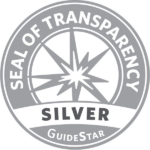 “Green Cleaning”: An Easy Guide for Homes & Offices
“Green Cleaning”: An Easy Guide for Homes & Offices
“Green Cleaning” means keeping toxic chemicals out of your home and office. Many people think that proper cleaning requires strong chemicals. This approach is not only wrong, it is also dangerous. My Green Doctor learned this from a lecture by Vickie Leonard, RN, Ph.D. of the University of California School of Medicine at San Francisco, at a meeting of the Mid-Atlantic Center for Children’s Health and the Environment.
The first thing to know about cleaning is that “more” is usually not better. Our world and our bodies are covered with living bacteria, fungi, and viruses. Most of these are not harmful and, in fact, many are beneficial and necessary for our health. Some diseases are being blamed in part on our super-clean obsession: infections become resistant to antibiotics, childhood asthma is worsened by chemical exposures, and confused immune systems produce autoimmune diseases such as rheumatoid arthritis and psoriasis.
Green cleaning means also not wasting your time by over-cleaning. Ninety-nine percent of bacteria, fungi, and viruses will be eliminated with simple soap, water, and scrubbing. Hot water is not needed, so save fossil fuels and money by using cold or warm water. Although soap and water are best, it is fine to use a liquid, alcohol-based hand sanitizer when soap and water are not available.
Hot water is not needed for proper cleaning.
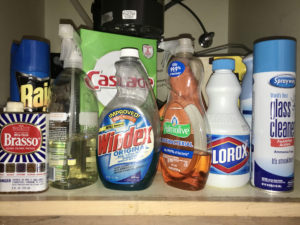 The second thing to know is when is it that stronger approaches are truly required. Chemicals stronger than soap and water remove 99.9% of pathogens (this is called “sanitizing”) or even stronger chemicals remove 99.999% of pathogens (called “disinfection”). Sanitizing or disinfecting usually is not wise. Exceptions might be major contaminations with infectious blood, urine, or feces.
The second thing to know is when is it that stronger approaches are truly required. Chemicals stronger than soap and water remove 99.9% of pathogens (this is called “sanitizing”) or even stronger chemicals remove 99.999% of pathogens (called “disinfection”). Sanitizing or disinfecting usually is not wise. Exceptions might be major contaminations with infectious blood, urine, or feces.
Of course, healthcare professionals in hospitals must disinfect surfaces when working around pathogens such as COVID-19 or HIV, but even in the COVID-19 era this extreme cleaning is not needed in the usual work or home setting.
Sanitizing or disinfection usually is not wise!
True sanitizing or disinfecting requires special techniques. Cleaning products cannot penetrate into dirty surfaces. Therefore, to sanitize or disinfect a surface, you must first pre-clean the surface with soap and water to remove superficial debris. Next, the stronger cleaning product is applied and left to dwell on the surface for 10-15 minutes in order to eliminate that last 0.0001% of pathogens. Without both pre-cleaning and dwell time, the goal of sanitizing or disinfecting is not achieved, and toxic cleaning chemicals are wasted. The bottom line is that simple soap and water are fine for most cleaning jobs.
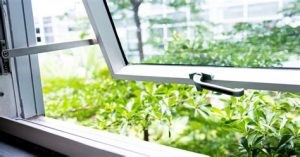 All sanitizers and disinfectants are hazardous, particularly to children. Asthma, thyroid disease, endocrine disruption, chronic lung disease, and environmental damage have all been reported. These chemicals are now ubiquitous in our world, found in soil, rivers, and oceans. They are found in the blood of newborn babies even before their first bath! You should be particularly concerned about the fragrances that are put into cleaning products to mask the chemical smells. Fragrances add no cleaning benefit but most are unregulated volatile organic compounds with health risks for people. Dr. Leonard tells her audiences that, “Clean is not a smell”, and that we need to be alarmed by the scents that give us a false sense of health. Also to be avoided are candles, with or without scent, air fresheners, and any other scented product. These are not the smells of wellness!
All sanitizers and disinfectants are hazardous, particularly to children. Asthma, thyroid disease, endocrine disruption, chronic lung disease, and environmental damage have all been reported. These chemicals are now ubiquitous in our world, found in soil, rivers, and oceans. They are found in the blood of newborn babies even before their first bath! You should be particularly concerned about the fragrances that are put into cleaning products to mask the chemical smells. Fragrances add no cleaning benefit but most are unregulated volatile organic compounds with health risks for people. Dr. Leonard tells her audiences that, “Clean is not a smell”, and that we need to be alarmed by the scents that give us a false sense of health. Also to be avoided are candles, with or without scent, air fresheners, and any other scented product. These are not the smells of wellness!
Do not use bleach, a potent cause of asthma and lung disease in children and adults. In the United States, the top two occupations at risk for developing asthma are child care and nursing, likely due to the routine use of bleach in daycare centers and hospitals. Bleach has been banned from cleaning products in Minnesota (USA) due to the dangers. Bleach should be used only where there has been extreme contamination, and only after a thorough soap and water pre-cleaning.
Another bad chemical that should not be in your office or home is triclosan. Learn more about triclosan from My Green Doctor: https://mygreendoctor.org/safe-soap-cheaper-greener-by-avoiding-triclosan-2/.
 A great tool for routine cleaning is the “microfiber” cloth sold at grocery stores and hardware stores worldwide. These are inexpensive, reusable cloths that are much more effective than sponges, cotton mops, or paper towels. Microfiber cloths remove 99% of pathogens without chemicals plus you can wash them up to 1000 times. Try not to wash them with bleach, fabric softener, or detergent as these decrease the bacterial-hugging ability of the cloths.
A great tool for routine cleaning is the “microfiber” cloth sold at grocery stores and hardware stores worldwide. These are inexpensive, reusable cloths that are much more effective than sponges, cotton mops, or paper towels. Microfiber cloths remove 99% of pathogens without chemicals plus you can wash them up to 1000 times. Try not to wash them with bleach, fabric softener, or detergent as these decrease the bacterial-hugging ability of the cloths.
What cleaning products should you buy?
So what cleaning products should you buy? You cannot rely on terms such as “natural”, “green” or “non-toxic” because these terms are unregulated. Instead, look on product labels for the logos of independent certifying organizations such as the U.S. Environmental Protection Agency’s “Safer 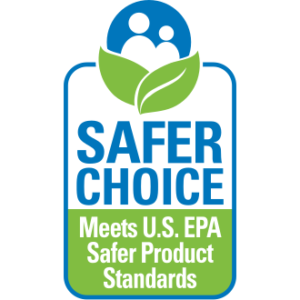 Choice” program. Safer Choice labels are on more than 2,000 cleaning products, from detergents and hand soaps, to pet care products and car cleaners. These meet high EPA standards for product safety, performance, packaging sustainability, emissions of volatile organic compounds (VOCs), and other criteria. Other logos to look for are the European Union’s Eco Label, Green Seal, and Design for the Environment. At work, speak with your supplier of cleaning products or with your custodial team to be sure that safe choices are made for your co-workers and patients.
Choice” program. Safer Choice labels are on more than 2,000 cleaning products, from detergents and hand soaps, to pet care products and car cleaners. These meet high EPA standards for product safety, performance, packaging sustainability, emissions of volatile organic compounds (VOCs), and other criteria. Other logos to look for are the European Union’s Eco Label, Green Seal, and Design for the Environment. At work, speak with your supplier of cleaning products or with your custodial team to be sure that safe choices are made for your co-workers and patients.
“Green Cleaning” means simply choosing soap and water. Avoid the dangers of sanitizing or disinfecting chemicals. Save money and clean better with reusable microfiber cloths rather than sponges, mops, and paper towels. Buy only cleaners displaying a logo from an independent green certifying organization.
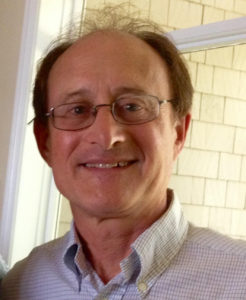 Author: Dr. Todd Sack is Executive Director for the My Green Doctor Foundation, sharing wise, money-saving choices with health professionals and communities. Visit us at https://mygreendoctor.org.
Author: Dr. Todd Sack is Executive Director for the My Green Doctor Foundation, sharing wise, money-saving choices with health professionals and communities. Visit us at https://mygreendoctor.org.
Photo credit: Microfiber cloth: https://www.homedepot.com/c/ah/how-to-clean-microfiber-cloths/9ba683603be9fa5395fab901743e4d0f. Accessed January 20, 2021
The My Green Doctor Foundation is a charitable, non-profit organization that supports the educational mission of My Green Doctor. If you can help provide educational resources on wise environmental choices to patient waiting rooms in economically disadvantaged communities, please use our donation button at https://mygreendoctor.org. Thank you.
#greencleaning #greenoffice #chemicals # sustainability #climatechange #health





